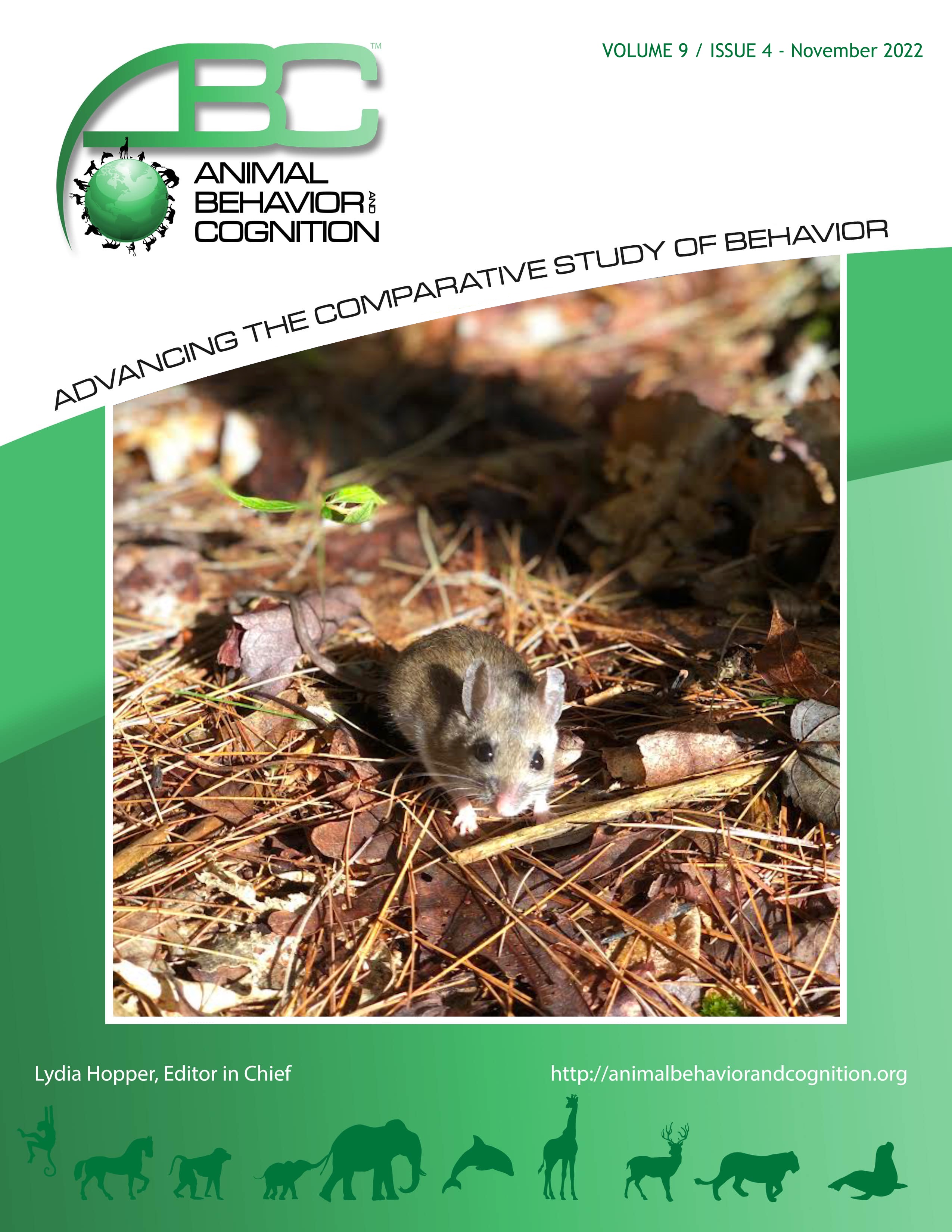Vol 9, Issue 4, November 2022
Intentional Alarm Calling in Wild Female Putty-Nosed Monkeys (Cercopithecus nictitans)
Citation
Mehon, F. G., & Stephan, C. (2022). Intentional alarm calling in wild female putty-nosed monkeys (Cercopithecus nictitans). Animal Behavior and Cognition, 9(4), 385-395. https://doi.org/10.26451/abc.09.04.02.2022
Abstract
The intentionality that characterizes human language currently still lacks conclusive evidence for precursors in animal vocal communication. Complex intersubjectivity as in language is usually supposed to be either evolutionary rooted in gestural communication or unique to humans. Here we systematically tested various groups of wild putty-nosed monkeys (Cercopithecus nictitans) for female first-order intentional alarm calling using a recently suggested framework to comparatively test for intentionality in animal communication. Specifically, we used a leopard model to elicit female alarm calls that usually trigger the group’s male alarm calls and further recruit that male to mob and deter the nearby predator. We experimentally disentangled male alarm calling from male predator mobbing to test for female goal directedness in recruiting males for predator defense, voluntary alarm call usage, and the successful manipulation of male behavior. Females monitored male behavior and immediately ceased own alarm calling once the group’s male took over group defense but not after perceiving the male’s typical alarm calls. Unsuccessful male recruitments and the absence of male predator mobbing resulted in persistent and considerably longer female alarm calling. We discuss different communicative functions of female alarms and conclude that our results are most likely explained by the intentional use of female alarms in order to recruit males as ‘hired guns.’
Keywords
First-order intentionality, Manipulation, Reputation-based mate choice, Alarm calls
